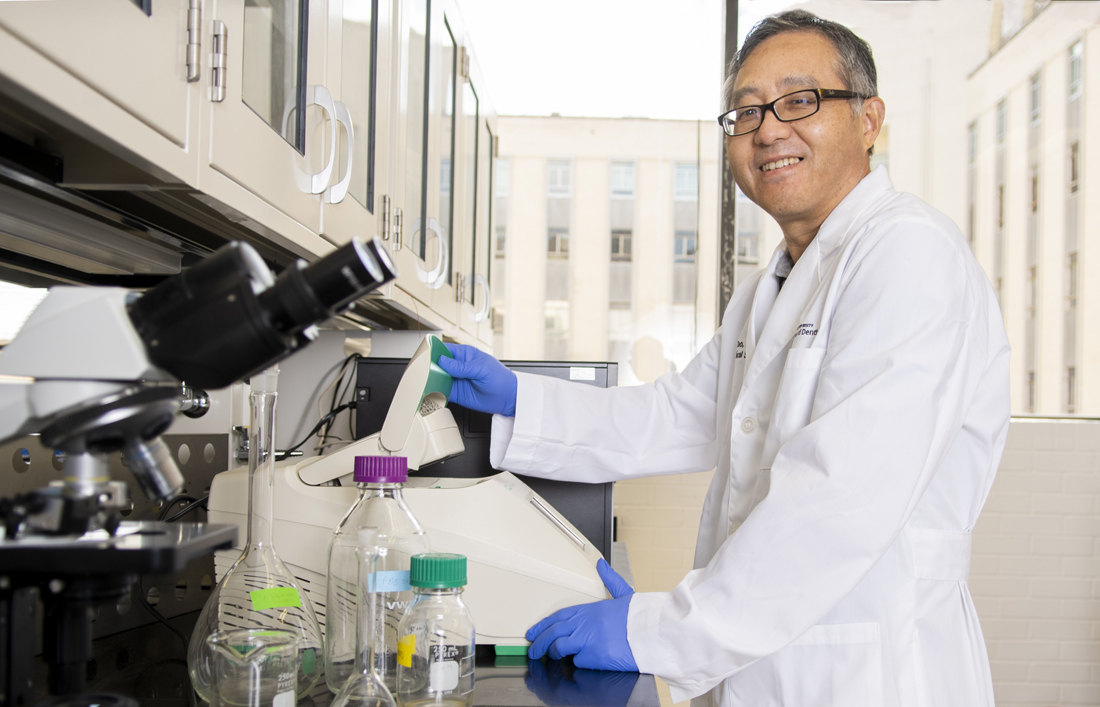Two R01 grants for one researcher

Determination to understand the central mechanism of chronic pain, including different types of orofacial pain, led to two National Institutes of Health R01grants for Texas A&M School of Dentistry researcher Dr. Feng Tao. R01 grants are the oldest and most prestigious grants awarded by the NIH to investigators conducting health-related research.
Tao’s current research projects are focusing on temporomandibular joint disorders, commonly called TMD. The conditions affect joints in the jaw and can cause chronic pain – making chewing, talking and laughing more difficult. Complicated to treat, TMD impact the lives of more than 10 million people in the U.S., according to the NIH.
Funded for $1.7 million earlier this year, Tao’s first research project, entitled “Short-chain fatty acids and chronic temporomandibular joint pain” focuses on short-chain fatty acids and chronic temporomandibular joint pain.
“In my first project, we investigated the mechanisms underlying chronic pain in the TMJ,” says Tao, professor in biomedical sciences. “In this project, we will demonstrate how gut microbiome metabolites contribute to such pain.”
In recent years, more studies have reported that gut microbiome plays an important role in different neurological disorders, including chronic pain, according to Tao.
“Targeting the fatty acids produced in the gut could ultimately aid in the development of non-opioid therapy for TMJ pain,” he says.
His second $1.7 million grant, entitled on the “Female-specific role of trigeminal dynorphin in temporomandibular disorder and its comorbidity,” was awarded in August.
“Epidemiological studies have reported that temporomandibular disorders and migraine headache are closely associated, and both are more prevalent in women than in men,” Tao says.
Tao and his team are trying to figure out why. Preliminary studies have given them some clues that may lead to female-specific therapies for this overlapping pain condition.
“Our studies in the two R01 grants will provide new insight into the underlying mechanisms for TMD and the other medical conditions that often accompany it, which could aid future development of a novel therapy for the intractable pain condition,” he says.